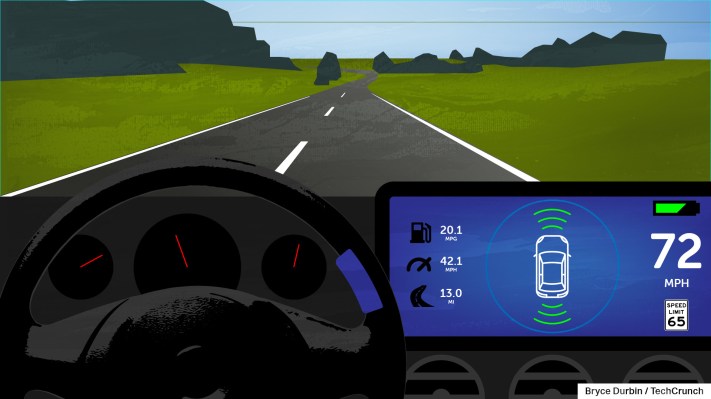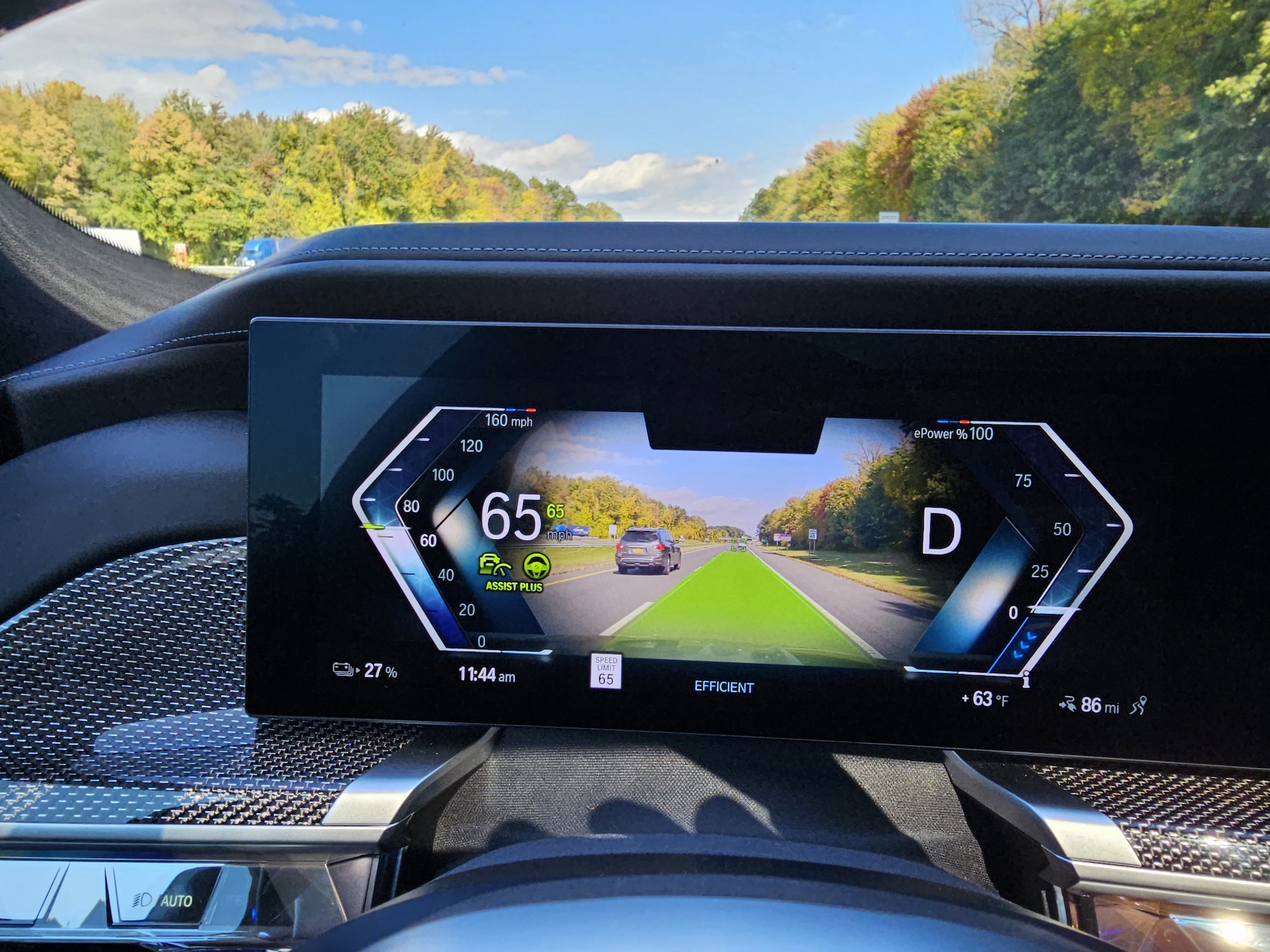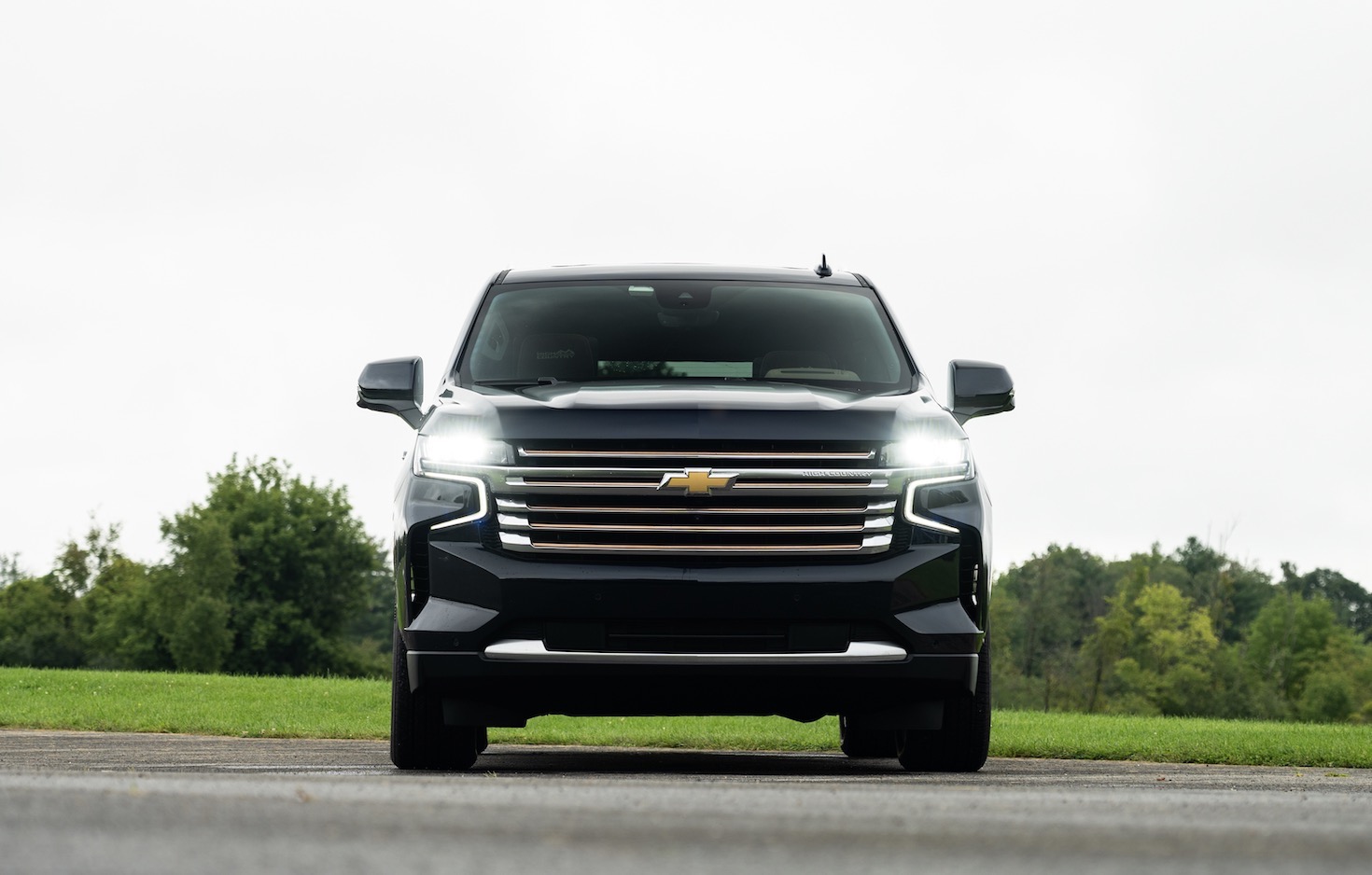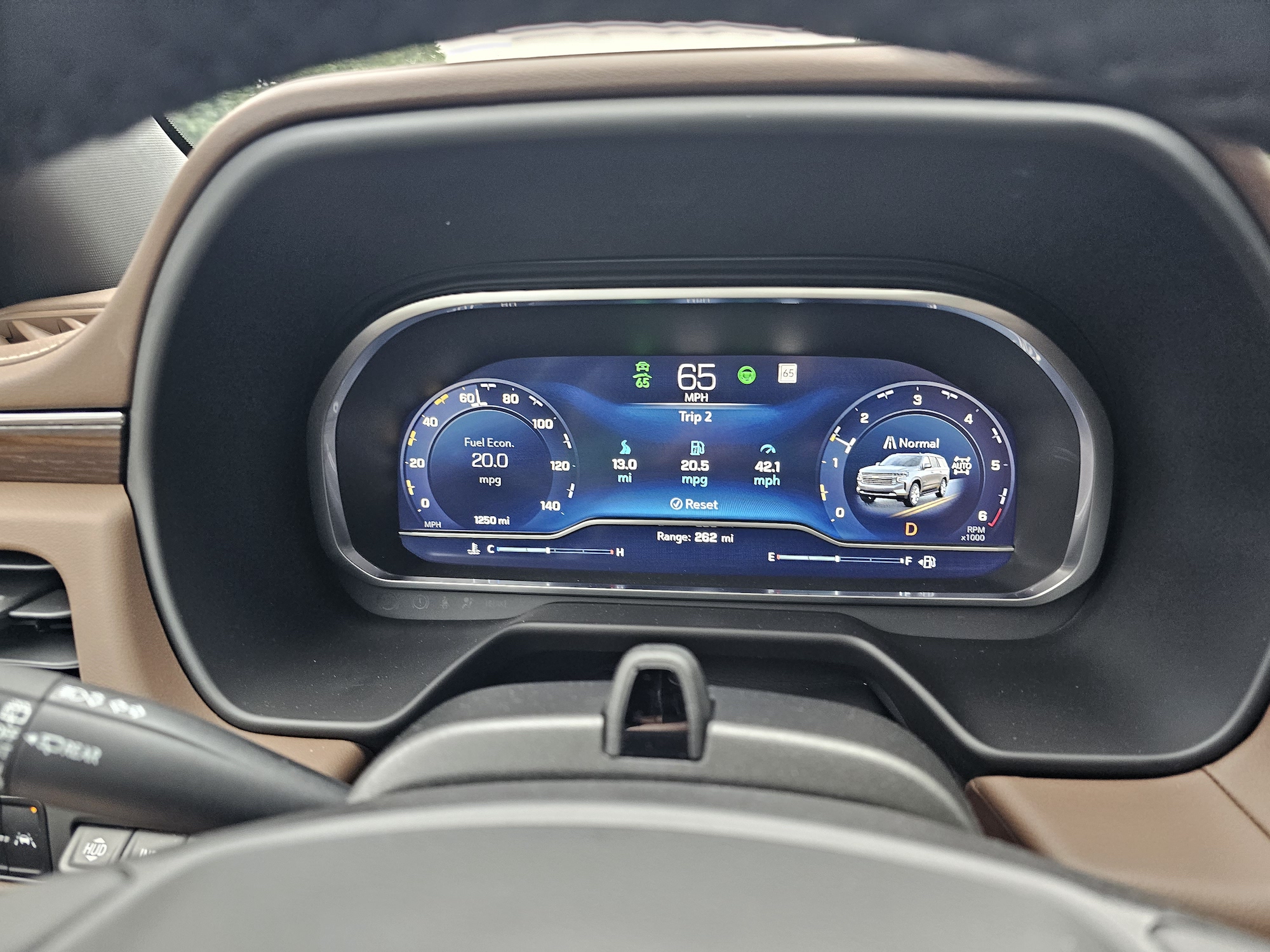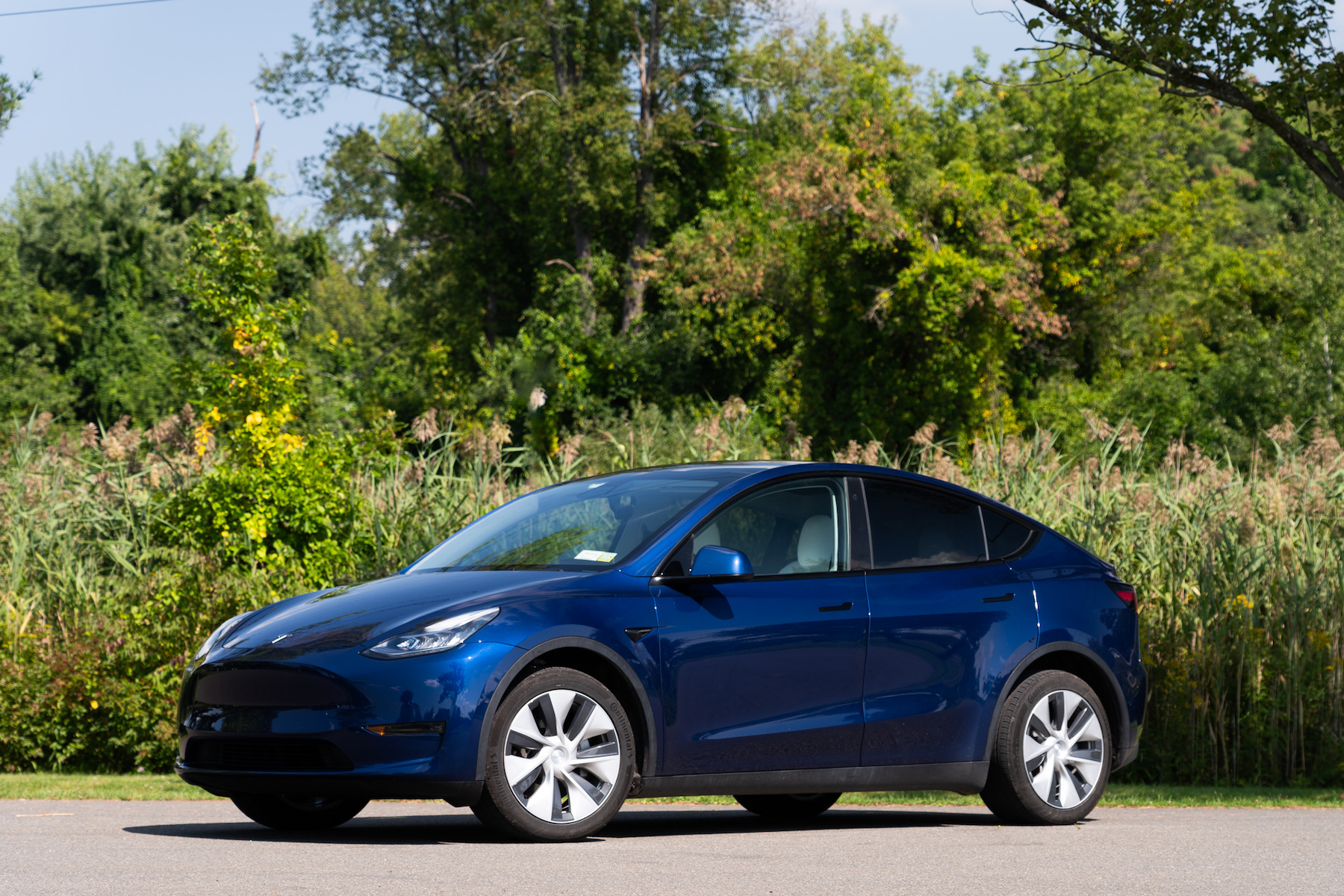The automotive industry has entered into a new era of vehicular safety, where in-car systems initially designed to keep you alive are also being marketed as quality-of-life improvements. What once was something only discussed with your insurance adjustor is now technology you might covet on your next commute.
While virtually every car on the road today offers some aspect of advanced driver assistance system, or ADAS, a choice few go above and beyond. No longer marketed just to concerned parents, they’re increasingly positioned as next-generation helpers, onboard luxury assets for stressed-out business people with the promise of reducing blood pressure at the touch of a button.
For the first time in North America, we even have a Level 3 automated system where, in limited circumstances, the car is capable of driving itself, its manufacturer liable for any collision.
But which of these competing systems with aspirational names like Super Cruise and Full Self-Driving is best at making your commute easier? And, are any of them worth their considerable price of entry?
The cars
These are the systems we tested and the cars in which we tested them:
- BMW Highway Assistant: 2023 BMW i7 xDrive60
- Chevrolet Super Cruise: 2023 Chevrolet Suburban 4WD High Country
- Ford BlueCruise: 2023 Ford Mach-E Premium AWD
- Mercedes-Benz Active Distance Assist Distronic with Active Steering Assist and Drive Pilot: 2023 Mercedes-Benz EQS
- Tesla Full Self-Driving: 2021 Model Y with FSD beta software version 11.4.2
The testing
All of the cars, with one exception, were tested on a fixed loop in New York State that included stretches of rural roads, single carriageways and divided highways ranging from two to four lanes.
Navigation was always programmed using the car’s built-in system (not something like Google Maps via Android Auto or Apple CarPlay), and the driver always wore the same pair of polarized sunglasses to test the driver monitoring system. Weather was always fair to overcast.
The exception to this regimen is the Mercedes-Benz system, tested on a separate loop around Los Angeles. Currently, the Drive Pilot system is only legally allowed in California and Nevada, which necessitated the change of venue.
In each situation, cars were evaluated not only for how well they followed the road and flowed within traffic but also how easy each system was to engage and disengage, how quickly they identified a lack of attention by the driver and how they responded to that situation.
One final note: With the potential exception of Mercedes-Benz Drive Pilot, these are all driver assistance systems. Even though you may be free to take your hands off the wheel, you are still very much responsible for what the car does. This means keeping your eyes on the road.
BMW Highway Assistant
Cost: $2,100
Hands-off: Yes
BMW’s Highway Assistant is its latest evolution of ADAS, offering hands-off driving on the highways and advanced lane-keep assistance on rural roads, meaning it stays centered in its lane regardless of situation.
When not on the highway, you will need to keep your hands on the wheel, but given BMW relies on capacitive touch sensors, you won’t have to worry about giving that wheel a shake every few minutes to remind it that you’re there.
Highway Assistant relies on a series of icons on the gauge cluster and the heads-up display. A green speedometer icon means that active cruise control is enabled. When a green steering wheel appears, the lane-keep functionality is enabled. Additionally, the system paints green lines on the lane ahead on the gauge cluster’s augmented reality view, indicating that the car has identified the path ahead.
When drivers get onto a portion of highway where they can go hands-off, the car adds the text “ASSIST PLUS” on the gauge cluster. That text is a cue to release the wheel. At this point, the car steers itself, watching the road ahead with a combination of radar and optical imaging sensors. It’s also watching the driver with an infrared camera.
That camera is built into the top of the gauge cluster, which forced me to position the steering wheel higher than I’d like. If I didn’t, the top of the wheel blocked my eyes, disabling the system. When oriented correctly, the system accurately detected any inattention within six seconds, prompting me with a visual and auditory cue to watch the road ahead.
Highway Assistant occasionally took a long time for the hands-off Assist Plus mode to enable, upwards of 30 seconds after I’d merged onto the highway. But, once on, it maintained its lane without issue.
Highway Assistant will not currently automatically change lanes either based on traffic or navigation; that feature is coming first to the 2024 5 Series and later to other models. Once that feature rolls out, Highway Assistant will prompt for a lane change, and the driver simply looks into the appropriate mirror to confirm.
For now, though, lane changes can be initiated by touching the turn stalk in the direction you want to go. The car will turn on the signal, look for an opening, then make the change. In my testing, it did this smoothly, waiting for spaces and cleanly completing the change. Taking over and performing a manual lane change is also smooth. You don’t need to overpower the system, just turn the wheel like normal, perform the turn, then release the wheel again.
Whether hands-on for rural roads and single carriageways or hands-off on divided highways, BMW’s assistance system worked quite well. The inability to automatically adapt to changing speed limits is a mark against, as is the lack of automatic lane changes, but again, that feature is at least coming. At $2,100 for the Driving Assistance Pro Package, for the lifetime of the vehicle, BMW’s system is among the least expensive in this group.
Chevrolet Super Cruise
Cost: Upwards of $2,200 (dependent on vehicle), $25 monthly after three years
Hands-off: Yes
Next is the system that brought hands-off driving to the masses: GM’s Super Cruise. It debuted on the 2018 Cadillac CT6 and, since then, has slowly trickled out to more mass-market cars, like the 2023 Suburban that I tested. You can even get Super Cruise on a $30,000 Bolt EUV — while they last, anyway.
The Suburban featured Chevrolet’s latest Infotainment 3 Premium system, which is Android Automotive-based. That meant the baked-in navigation is Google Maps. But, because Super Cruise doesn’t perform lane changes to prepare for upcoming exits, it didn’t matter which nav system I used.
Super Cruise cannot be activated on rural roads, so there the Suburban relies on its lesser active safety systems. Adaptive cruise still does a good job of managing speed with traffic, but the lane-keep assist system here is of the basic variety, nudging you back toward the center if you stray too far one way or the other.
Once you enter the highway, Super Cruise immediately presents an icon of a white steering wheel in both the gauge cluster and the heads-up display to indicate the availability of the system. Press the Super Cruise button on the steering wheel and LEDs integrated into the top of the steering wheel turn green. At that point, you’re safe to take your hands off the wheel.
It’s nearly instantaneous to engage, and disengaging is even easier. If you want to change lanes manually or steer around something, you only need to grab the wheel and turn. The lights on the wheel turn blue to indicate that you’re in control, but Super Cruise is still available. Then, when you’re through, just let go again and Super Cruise resumes its duty.
In my testing, though, I rarely needed to touch the wheel, especially since Super Cruise can complete lane changes automatically. This was always done safely and cleanly, even in dense traffic, with my only complaint being that the Suburban occasionally lingered in the left lane for too long after a pass. If you don’t like the idea of lane changes, you can disable the feature.
The Suburban never did anything to make me feel uncomfortable, even nudging over in the lane when passing a tractor-trailer to ensure plenty of cushion. When it comes to driver monitoring, the system chimed after nine seconds if my gaze lingered too far in any direction other than straight ahead. After repeated warnings, the system automatically disengaged itself.
Overall, Super Cruise was a great driving partner during my testing, never making any untoward movements on the road and always acting in a smooth, confident way. It worked on every divided highway I tried and even on some undivided single carriageways.
Pricing for Super Cruise depends on the vehicle. On the Bolt EUV, for example, it’s a standalone $2,200 option. On the Suburban I used for testing, it’s part of the $2,700 Advanced Technology Package. These costs cover three years of use. After that, it’s $25 monthly.
Ford BlueCruise
Cost: $2,100 at vehicle purchase, $800 annually or $75 monthly after three years
Hands-off: Yes
Next up is Ford’s BlueCruise, which sounds similar to GM’s offering and operates quite similarly, too. I tested the 1.3 version of BlueCruise, which added support for sharper turns and narrower lanes than before, plus a number of other niceties that, Ford says, greatly expands its real-world usability.
The Mach-E’s active safety systems started by doing a great job even on small, rural roads. Though only operating in hands-on mode, the Mach-E’s lane-keep system automatically adjusted speed even for school zones and kept the car centered, only disengaging on some very sharp bends.
Hands-off BlueCruise, however, is restricted to divided highways, and the system enabled itself within seconds of my merging into my lane. Once there, BlueCruise worked flawlessly. Though the driver needs to confirm them with the turn signal stalk, the system will perform automatic lane changes to pass slower traffic, merging in and out of the flow without issue and inching left or right in the lane to give room when other traffic is getting a little too close for comfort.
Overriding the system for manually changing lanes again simply requires turning the wheel. There was no resistance to this, making it a smooth experience for passengers, and the system was ready to take over again within a second or two of completing a manual lane change.
While BlueCruise won’t automatically position the car based on navigation, it will notify you about upcoming exits if you’re using Ford’s integrated navigation, eventually prompting you to take control and move the car into the exit lane.
Regarding driver monitoring, the system reacted within four seconds with a visual warning on the gauge cluster, following that up a few seconds later with a polite chime. Even after repeated warnings, though, the system did not disengage itself.
BlueCruise worked flawlessly on divided highways, while the Mach-E’s other assistance systems worked extremely well on rural routes. At $2,100 for the first three years, the system is priced comparably to Super Cruise. But, after those three years, that cost jumps to a whopping $75 monthly subscription or $800 for a year of functionality.
Mercedes-Benz Active Distance Assist Distronic with Active Lane Change Assist
Cost: Standard on some models, part of $1,950 Driver Assistance Package on others
Hands-off: No
I’m splitting the Mercedes-Benz systems into two sections because they are only related in that they operate in the same car and share some of the same sensors. Though they are complementary, the latest version of Distronic feels more advanced than Drive Pilot in some ways, despite Drive Pilot ostensibly offering Level 3 autonomy.
Active Distance Assist Distronic differs from systems from other manufacturers most significantly in that it is fully a hands-on system. Thankfully, like BMW, Mercedes-Benz relies on a capacitive steering wheel, so you simply have to rest one hand on the wheel.
Distronic’s advanced lane-keeping system does a great job of keeping the car centered in all situations, as does its adaptive cruise control smoothly keeping up with the flow of traffic, even bringing the car to a complete stop. On the highway, Active Steering Assist will also automatically change lanes.
The car will indicate an upcoming lane change on the gauge cluster by painting a green arrow to the left or right. An audible chime sounds to alert you of this change, giving you time to cancel it using the steering wheel controls. But, left to its own devices, the car will then signal and complete the lane change without further driver input.
The car will not only do this to bypass slower traffic but even to get you into the optimal lane for upcoming exits and other navigation prompts. It’ll still be up to you to exit the highway, but in situations where the highway splits or where you need to be in a certain lane, the car more or less does that itself.
Despite being a hands-on system, the latest Distronic works competently and confidently, merging into and out of even quite dense traffic without hesitation. Active Distance Assist Distronic is standard on some models, like the S-Class, and comes as part of the Driver Assistance Package that costs $1,950 on others. The automatic lane change portion of Automatic Steering Assist will come first on the 2024 E-Class.
Mercedes-Benz Drive Pilot
Cost: $2,500 for 12 months
Hands-off: Yes
Drive Pilot is the next step of driver assistance and the only system here that provides a taste of autonomous driving. However, that taste is just a morsel for now. The window in which Drive Pilot can be used (the operational design domain, or ODD) is so very limited that the resulting system is less compelling.
Available for now only in California and Nevada, and there only on divided highways that have been mapped in high definition, Drive Pilot works in traffic (with a visible car ahead) and at speeds up to 40 mph. You also must be driving during daylight hours and in good weather.
Meet all those criteria, and you will be greeted with an icon on the gauge cluster and a pair of white lights on the buttons embedded in the steering wheel. At this point, the car has determined that it can safely handle driving duties. Its view of the road ahead is clear, facilitated by multiple optical and radar sensors, plus a single forward-looking lidar sensor, all augmented by a high-fidelity GPS antenna.
Press either of those buttons, wait for a shift to a blue color, and then you can take your hands off the wheel. The car is legally and functionally driving itself. However, you’re not free to do whatever you want. The car’s infra-red cameras, built into the bottom of the gauge cluster, are still watching you.
Should you close your eyes for more than 10 seconds, it will prompt you with lights, chimes and even tug the seatbelt. You’re also not allowed to turn around and look at anyone in the rear seat for long.
You may cue up movies on the car’s infotainment screens or surf the web through the integrated browser, but you can’t tune out. In my time behind the wheel, I was prompted by the car many times to prove that I was still there and still alert. Use of a smartphone, I was advised, is also technically illegal and so verboten.
That’s a very narrow window of allowable conditions and acceptable driver behavior. Drive Pilot’s functionality is limited, too. It cannot automatically change lanes, either to avoid traffic or in response to navigation prompts, but you are at least easily able to override the system and change lanes manually without it struggling for control.
Though Drive Pilot is frustratingly limited for now, it is just a first step. Mercedes-Benz promises its features and ODD will expand over time, hopefully with a cadence of updates swift enough to make that $2,500 annual fee worthwhile.
You can read our full impressions of Drive Pilot here.
Tesla Full Self-Driving
Cost: $199 monthly or $12,000
Hands-off: No
Tesla’s so-called Full Self-Driving, or FSD, is unique among this group in two ways. Tesla is the only manufacturer here that does not offer some aspect of hands-off highway driving, and FSD is the only system here that does not restrict its usage. There’s no geofencing or other policing going on here. You can use FSD on any road you like, but I don’t recommend it. For this test, the FSD beta software was version 11.4.2.
I found the FSD beta software frequently confused on urban and rural streets, often slowing down excessively ahead of curves and behaving erratically through intersections, especially on roundabouts. I often needed to take manual control in these situations, which is a challenging thing to do.
Overriding Tesla’s Autosteer functionality requires a firm grip and a sharp turn of the wheel. This is unnerving for the driver and uncomfortable for the passengers.
On the highway, things are much better. The system moves through traffic cleanly, automatically changing lanes with your choice of aggression: Chill, Average or Assertive. My only complaint here was that, on three-lane highways, the system wants to stay in the center lane, whereas I prefer to keep on the right unless passing. The system does, though, automatically adapt to changes in speed limits and will change lanes to get you into position for upcoming exits.
Telsa’s driver monitoring was by far the most lax of those tested. In most of my gaze tests — staring at the center display too long, looking out the side window too long, even outright closing my eyes — FSD didn’t seem to care. Only once did it prompt me to return my eyes to the road, after I looked down at the passenger footwell for seven seconds.
The system is, however, quite insistent about you keeping your hands on the wheel. Because there’s no capacitive touch sensor, that means giving the wheel a little jiggle every few minutes.
Tesla’s system offers a reasonably capable hands-on experience on the highway, but it’s more of a nuisance everywhere else. It’s also the most expensive here, more so even than the Mercedes-Benz Drive Pilot system, which includes a full array of advanced sensors, including lidar.
This Model Y, meanwhile, doesn’t even have radar, leaving its future automated driving capability in serious doubt.
The upshot
The intent of this round-up wasn’t really to pick a winner, but still it’s pretty easy to choose a loser. Three years after its initial beta release, Tesla’s supposed Full Self-Driving still doesn’t live up to its name. As the most expensive option here, it’s easy to single out.
In its current state, Mercedes-Benz’s Drive Pilot also disappoints. Its extreme ODD limitations and inability to do things that the company’s own level-two system can do make it a tough sell. The promise, though, is the future. With its bevy of onboard sensors and processors seemingly opening the door to far more advanced functionality, Drive Pilot is surely destined for continual improvement.
That leaves the hands-off systems from BMW, Ford and Chevrolet to duke it out for top honors. The lack of automatic lane changes in BMW’s current implementation of Highway Assistant makes it feel less advanced, but that feature is coming soon.
Both Ford BlueCruise and Chevrolet’s Super Cruise performed remarkably well, more or less on par. Super Cruise’s hands-off lane changes and broader ODD give it a slight edge. But, that Ford has evolved its system to this point in only two years, and Super Cruise has been on the market for more than five, means that the Blue Oval has the momentum here.
Regardless, if these manufacturers want to earn the regular fees attached to most of these systems, and thus drive that sweet recurring revenue, they’re all going to have to keep getting better. That means we are all the winners here.
